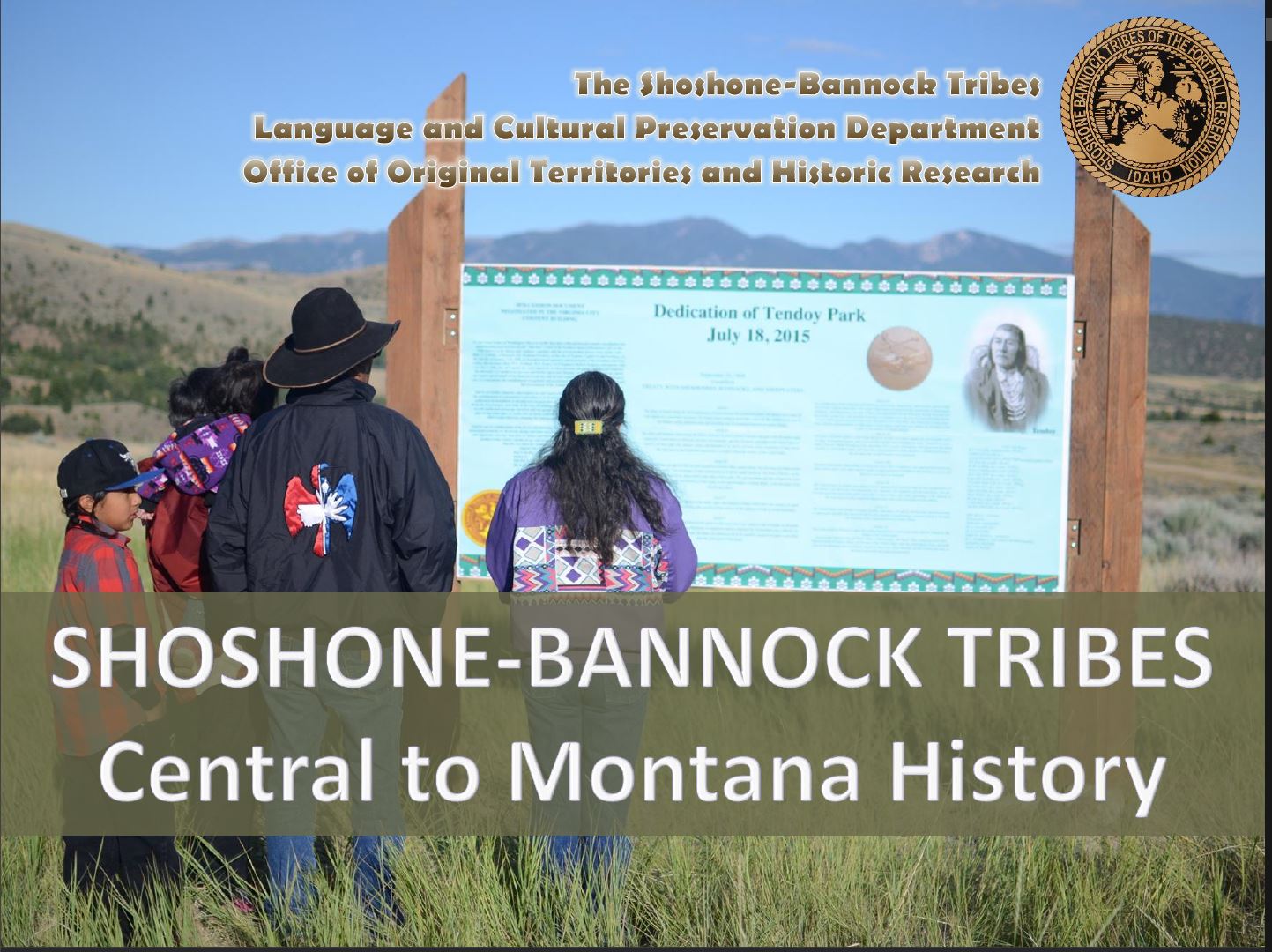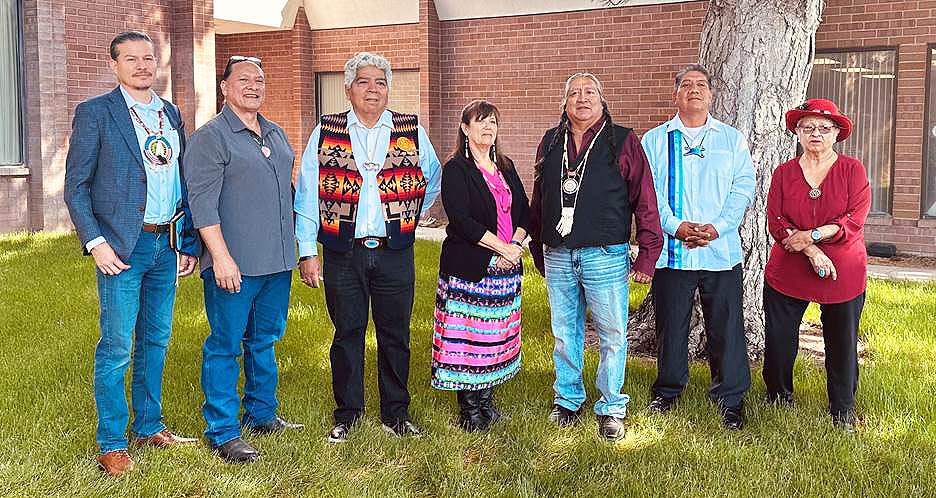
The Enduring Heartbeat: Navigating Sovereignty and Survival with the Shoshone Tribal Council
FORT WASHAKIE, WYOMING – Nestled against the dramatic backdrop of the Wind River Mountains, where the vast plains meet the towering peaks, lies the Wind River Indian Reservation. It is a land steeped in history, rich with the echoes of ancient hunting grounds and the enduring spirit of the Eastern Shoshone people. At the heart of this vibrant community, steering its destiny through the currents of the 21st century, stands the Eastern Shoshone Tribal Council.
More than just a legislative body, the Council is the modern embodiment of Shoshone sovereignty, a testament to resilience, and a vital bridge between a profound past and a complex future. Its members bear the immense responsibility of governing a nation, making decisions that impact everything from economic development and healthcare to cultural preservation and environmental stewardship, all while navigating the intricate relationship with the federal government and upholding the distinct identity of the Shoshone people.

A Legacy of Resilience: From Nomads to Nation-Builders
To understand the Eastern Shoshone Tribal Council today, one must first grasp the arduous journey of the Nimiipuu, or “the People.” For millennia, the Shoshone were nomadic hunters and gatherers, their territory stretching across vast swaths of the Great Basin, Rocky Mountains, and Plains. Their lives were intimately connected to the land, their culture woven into the migrations of buffalo and the cycles of the seasons.
The arrival of European settlers brought profound disruption. Treaties, often broken, dramatically shrank their ancestral lands. The 1868 Fort Bridger Treaty established the Wind River Reservation for the Eastern Shoshone, a fraction of their original domain. Later, in a controversial move, the Northern Arapaho were also settled on the reservation, creating a unique, often challenging, co-management dynamic that persists to this day. This history of displacement, disease, and attempts at forced assimilation laid the groundwork for the modern challenges the Council faces, but also forged an unyielding commitment to self-determination.
“Our history is not just a story of loss; it’s a story of survival, of adaptation, and of an unbreakable spirit,” states an elder, a former tribal council member, who prefers to remain anonymous due to the sensitive nature of tribal politics. “The Council today carries the weight of that history, but also the hope for our future generations.”
The Anatomy of Governance: Structure and Scope
The Eastern Shoshone Tribal Council is comprised of six elected members and a chairman, serving two-year terms. Elections are keenly contested, reflecting the deep engagement of the community in its own governance. These individuals, often deeply rooted in the reservation community, represent diverse perspectives but share a common goal: the welfare and advancement of the Eastern Shoshone Nation.
Their mandate is broad and encompasses all aspects of a sovereign government. This includes:
- Legislation: Enacting laws and ordinances governing the reservation.
- Budgeting: Managing multi-million dollar budgets derived from federal appropriations, tribal enterprises, and natural resource revenues.
- Economic Development: Overseeing tribal businesses, exploring new ventures, and creating employment opportunities.
- Social Services: Administering healthcare, education, housing, and welfare programs.
- Cultural Preservation: Supporting language revitalization, traditional ceremonies, and historical education.
- Natural Resources Management: Protecting and sustainably managing the reservation’s vast lands, water, timber, and mineral resources.
- External Relations: Engaging with federal, state, and local governments, as well as other tribal nations.

“Every decision we make, whether it’s about a new business venture or a healthcare initiative, has to be viewed through the lens of our people’s well-being and our cultural values,” explains a current council member during a brief break from a seemingly endless meeting schedule. “It’s a constant balancing act.”
Navigating the Modern Labyrinth: Key Challenges
The path of self-governance is rarely smooth, and the Eastern Shoshone Tribal Council confronts a formidable array of challenges:
-
Economic Diversification and Job Creation: The Wind River Reservation possesses significant natural resources, including oil and gas, which have historically provided revenue. However, reliance on a single industry is volatile. The Council continuously seeks to diversify its economy through tourism, renewable energy projects, and small business development. Unemployment rates on the reservation often remain significantly higher than the national average, a persistent concern.
- Interesting Fact: The Wind River Reservation is home to some of the largest proven oil and gas reserves in Wyoming, yet the benefits often fail to fully translate into widespread economic prosperity for tribal members, highlighting the complexities of resource management and federal trust responsibilities.
-
Healthcare Disparities: Like many tribal nations, the Eastern Shoshone grapple with significant health challenges, including high rates of diabetes, heart disease, substance abuse, and mental health issues. The Council works tirelessly to improve access to quality healthcare, often lobbying the Indian Health Service (IHS) for increased funding and services. The intergenerational trauma stemming from historical injustices also manifests in various social ills that require culturally sensitive healing approaches.
-
Cultural and Language Revitalization: The Shoshone language, a critically endangered Uto-Aztecan language, is a cornerstone of tribal identity. The Council actively supports language immersion programs, cultural camps, and intergenerational knowledge transfer initiatives to ensure the language and traditional practices do not fade. “Our language is our soul,” states a Shoshone language teacher. “Without it, a part of who we are disappears. The Council understands this deeply, and their support is vital.”
-
Water Rights and Environmental Stewardship: Water is life in the arid West, and the Eastern Shoshone hold significant, federally reserved water rights. The Council has been a fierce advocate for these rights, engaging in complex legal battles to protect their share of the Wind River and its tributaries, essential for agriculture, cultural practices, and future development. They also confront environmental challenges like climate change, which impacts traditional food sources and sacred sites.
-
Federal Trust Responsibility: The relationship with the U.S. federal government is defined by a “trust responsibility,” where the government is obligated to protect tribal lands, assets, and resources, and to provide services. However, this responsibility is often underfunded and inconsistently applied. The Council must constantly advocate, negotiate, and sometimes litigate, to ensure the federal government upholds its end of the bargain, a process often described as an uphill battle.
Moments of Triumph and Unyielding Spirit
Despite the formidable obstacles, the Eastern Shoshone Tribal Council has achieved significant successes, embodying the enduring spirit of their people. They have championed educational initiatives, leading to increased high school graduation rates and more tribal members pursuing higher education. They have invested in tribal enterprises, like the Wind River Casino, which provides jobs and revenue. They have successfully reclaimed ancestral remains and sacred objects, ensuring proper reburial and cultural respect.
Perhaps most importantly, the Council stands as a beacon of self-determination. In a world that often seeks to erase indigenous identities, the Council asserts and defends the Shoshone way of life, ensuring that the unique cultural heritage, wisdom, and traditions of the Nimiipuu continue to thrive.
The Future: A Tapestry Woven with Ancient Threads
Walking through the Eastern Shoshone Tribal Council chambers, one senses the weight of history and the urgency of the present. Debates are passionate, decisions are often difficult, but underlying it all is an unwavering commitment to the community. The Council members are not just politicians; they are leaders deeply connected to their families, their land, and their heritage.
The challenges ahead are immense, from securing sustainable economic growth to preserving an ancient language against the tide of modernity. Yet, the Eastern Shoshone Tribal Council, like the river that gives their reservation its name, continues to flow, carving its path through the landscape of the 21st century. It is a powerful reminder that sovereignty is not merely a legal concept but a living, breathing commitment—a heartbeat that has endured for millennia and continues to pulse strong, guiding the Shoshone people toward a future woven with the enduring threads of their past.


